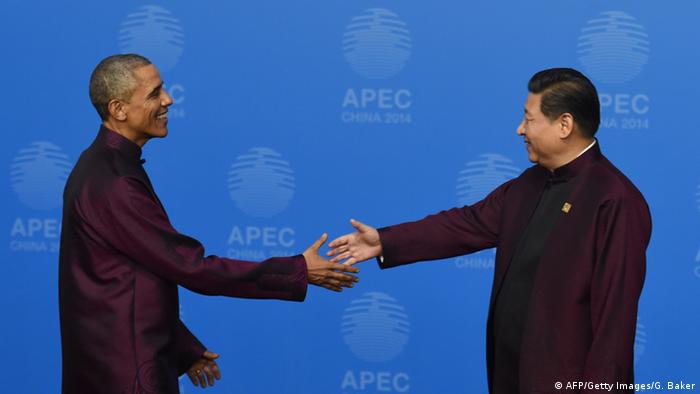
The recent APEC (Asia-Pacific Economic Cooperation) summit in Beijing was the perfect setting for the host, China, and the guest of honor, the United States, to see their respective ideologies clash. The conflict between Beijing and Washington shows that they are complete opposites, although the conflict is limited to the Pacific Ocean. A new challenger has arrived to compete with the American dream: the Chinese dream. It is directed mainly at developing countries, Africa and Latin America, as the USSR could not achieve [the dream] during the Cold War, not even by force.
Chinese academic authorities have been issuing statements about this topic more and more frequently. Wang Yiwi of the School of International Studies of the University of Remin recently stated, “The Chinese worldview is challenging the American worldview,” and “Before the world dreamed the American dream; now we are dreaming the Chinese dream.” Washington and Beijing have something very much in common: the notion of their own exceptional nature. For the United States it was the mythological belief that the founding of the country was a providential occurrence destined to illuminate the world — “the city on a hill” — as a great Christian nation that was born free of the vices of the Old Continent. China, the “Middle Kingdom,” as it called itself, inherited, with its version of a communist dictatorship, two traces of the imperial years: the certainty of its central position in the world and the intense desire for revenge against the West, which can be seen today in a doubled economic and military rivalry. Two exceptional nations: One is living one minute past its peak, the other coming up from behind. Even an ocean is not big enough for both of them.
The construction of this bipolarity has been marked in the last few years — for example, by the diplomatic clash over an uninhabited archipelago that Japan occupies and calls Senkaku, and China calls Diaoyu. In any case, it’s thought that it is sitting on top of a giant well of oil. This year Beijing has established an aerial reserve zone that covers said rocks, and is requiring that any foreign aircraft give notice before flying over them. During Obama’s time in power they have produced Stealth, the undetectable combat plane that the U.S. has had for years, with all the deliberation with which China administers its ceremonial slaps. Beijing is getting rid of, or preparing to get rid of various aircraft carriers, when it already has a fleet of submarines with nuclear weapons. In that pas de deux, China is advancing its pawns while the U.S. only aspires to containment. It is what President Obama calls “the strategic pivot” from the Atlantic to the Pacific with its web of allies, including the Philippines, Taiwan, South Korea, Japan, all keeping lookout.
The Chinese dream today is still a product for internal consumption. In Marco Polo’s Europe (8th century) there was a dream of a China (called Catay) of incalculable wealth, pearls and jade, which the imperial powers of Great Britain and France came up against in the mid-ninth century, to tie their hands if not to colonize them. But the Chinese dream now is the one that has come into play against the West.

Leave a Reply
You must be logged in to post a comment.